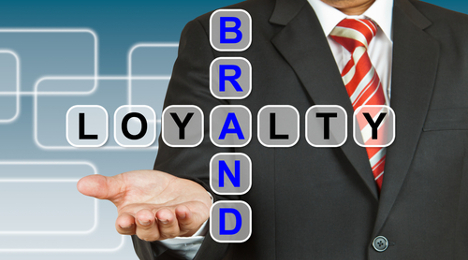The NADA Academy announced Monday that it has named Camron Wilson as its senior consultant of OEM and Allied Educational Solutions, a new position.
With 15 years of auto experience, Wilson is now responsible for expanding collaboration with OEMs, allied industries and dealership staffs via online and instructor-led training. Wilson spent 10 of those years with Ford Motor Co., where she worked in the sales, service, marketing and franchising departments.
“My work with Ford gave me a strong understanding of operations throughout the dealership, as well as the OEM and allied integral role working with individual dealerships,” Wilson said.
“In the franchising department, I gained a strong appreciation for NADA’s Academy by seeing how much better prepared dealer candidates became after completing it, and I’m especially pleased now to be part of the Academy team,” Wilson continued.
Allen Phibbs, the Academy’s director, looks forward to incorporating Wilson into the program’s offerings.
“As we expand our OEM and allied industry training programs, Camron is uniquely qualified to lead that effort, and we’re thrilled to have her onboard,” Phibbs said.
More information about the OEM and Allied Industry Training Program can be found on the program’s website or via email.
The International Automotive Remarketers Alliance would like to remind its members to renew their memberships this month for the next year. Potential members can also sign up on the organization’s website.
According to the organization, membership will help individuals improve their company’s performance, have a voice in the change in the industry, network with consignors and add the experience of the IARA organization to their brands.
Current members can click “Renew Your Membership” and those interested in joining can do so by clicking “Become A New Member.”
More information can be found at www.iaraonline.org.
Sixty-four million millennials are expected to purchase a car in the U.S. in the next five years alone. A new study provides important insights into what the emerging Millennial generation is really looking for when buying a car. The millennials, once known as the “Baby Boom Echo” (or Gen Y), are the largest generation in history; given this enormous and growing buying power it is safe to say that few dealers will be successful in the coming years without cracking the code on how to best serve this critical demographic.
Our friends at Deloitte recently released their 2014 Global Automotive Consumer Study. Here is the most critical headline for dealers:
- Millennials care more about the buying experience than the design of the car itself: Millennials find customer experience three times more important than vehicle design when making their final purchasing decision
Why do millennials seem to care more about the buying process than the design of the car? Here are a few thoughts based on our own research:
- Millennials aren’t that into cars: As we have discussed in earlier posts in this series, millennials are a generation that is more into technology than cars — there just aren’t a lot of “car guys” and “car gals” in this age group. In our research we also found that millennials tended to have much weaker brand affinity and product knowledge than older generations, leaving them with less excitement and anticipation going into the buying process. Enthusiasm for any purchase is dramatically enhanced by excitement and anticipation going into the purchase process — just watch the child who finally gets the Xbox they have been dreaming of for Christmas.
- Millennials have higher expectations for their purchase experience across all products: Because millennials aren’t that into cars and haven’t necessarily been dreaming of buying that particular car anyway, their focus is instead on the buying process, which puts tremendous pressure on dealers to rebuild their process around this emerging majority of car buyers.
As a generation raised on buying products on Amazon and music on iTunes, millennials expect a streamlined, fact-based, convenient process, and find the idea of the stereotypical car buying experience repelling. When asked how far the current car buying experience is from what they expect, millennials gave Deloitte an alarming response:
- Only 27 percent describe their recent dealership purchase experience as “positive”. And remember, more than half of millennial buyers say that a negative buying experience would preclude them from buying from that dealership or manufacturer again.
So what can you do to avoid being in that 73 percent of non-positive dealership experiences and ensure that you are getting your share of the 64 million cars they are expected to buy in the next few years? Here are three of the most important ways to win with millennials:
1. Speak Their Language: Don’t let your Web presence feel like the negative stereotype of a car dealer with “car-guy talk” in your ads. Instead gather as much objective “evidence” as you can from across the Internet to build value in each car and trust in your dealership.
2. Ensure Your Salespeople are Product Experts First: Few want to be “sold” to and most consumers feel that they know more from their online research than your sales “pro.” They will only embrace your sales “consultants” if they are truly product experts. For new cars, ensure your team is practiced and certified in the walk-around for each model. Pre-owned presents a much bigger challenge given all of the different variables for each unit (packages, Carfax, pricing, etc.) … Keep in mind that 65 percent of millennials would prefer to buy a car without having to negotiate with a salesperson.
3. Make Mobile Your Ally, Not Your Enemy: Most salesmen panic when they see a consumer pull out a mobile phone on the lot to check the market. Millennials are online all the time. It is naïve to think that they won’t use the computer in their pocket to help them level the playing the field when spending tens of thousands of dollars.
The best news? There are no headlines on getting rid of dealers or taking all of the profit out of the business. Millennials are focused on a high quality, convenient experience. Deliver on those needs with a “win-win” and they are happy to reward you with their business.
To read previous posts in this series, visit the blog at getrelevantordie.com.
Pat Ryan Jr. is the CEO and Founder of several high-growth tech companies focused on transforming automotive retail, including FirstLook and MAX Digital.
Patrick McMullen is Vice President at MAX Digital. Patrick brings over a decade’s worth of management experience in the automotive industry.
Shopping for a new car is still a hassle for many women. Women purchase more than 50 percent of all new cars or influence the purchasing of about 85 percent of all new cars sold in the U.S. and 48 percent in Canada.
Topping the list of gripes: Time. Twenty-one percent say buying a car is not quick and effortless.
Of the women surveyed, 15 percent said they didn't like or trust their salesperson.
When women decide to go out to a local car dealership to buy a car, they are most often ignored as if invisible. If they do bring a man (just to get noticed!) but try to dominate the sale (because it's their car, after all), they are treated like a mouthy kid, or worse yet, expected to allow the man to do all the talking.
In today's competitive auto industry, I can't understand how salespeople can discriminate based on gender. If anything, they should cater to women or risk missing a sale and the opportunity to recruit a loyal customer. With so much information available to women to conduct research before they buy a new car, women are becoming much more car savvy and deserve the respect of car dealerships.
Here are some facts on women car buyers:
- Women spend approximately 17 weeks on the new car buying process, three weeks longer than men.
- Women are more inclined to purchase cars that they consider fun-to-drive and that are well made. In contrast, men prefer vehicles that are a good value for the money, are comfortable, have nice exterior styling, good fuel economy and display a certain image.
- Women, more than men, place a high value on a vehicle's reliability, durability, passenger seating capacity, safety features and availability of four-wheel drive.
- Women rate safety as the most important aspect when shopping for new vehicles.
- Female buyers seek advice from automotive authorities (57 percent) before buying a new car.
- Female auto buyers will shop an average of three dealerships for best price and best treatment.
- One third of female buyers read an average of four automotive magazines for 12 months before purchase.
- Females place the most importance on dependability, functionality and economic factors when buying.
With these facts in mind, what is your dealership doing to attract, sell, retain and create loyalty with women car buyers?
Properly armed with the right tools and training your dealerships can increase its share of the largest and fastest growing demographic of new vehicle buyers in the US — women consumers. The Ask Patty Certified Female Friendly Dealer program was designed specifically for car dealerships to attract, sell, retain and keep loyal women consumers.
Editor's Note: Jody DeVere is the chief executive officer of Ask Patty.com. To learn more about becoming an Ask Patty.com, Inc. Certified Female Friendly dealer, email [email protected] or call (888) 745-1928. This contributed column contains data sourced from Edmunds.com, Road and Travel Magazine, Detroit News, CARMAX Survey 2013, and LipSticking – Marketing to Women Online.
Last Tuesday, voters unleashed their frustrations on the ballot boxes, driving Republicans to midterm victories nationwide and giving them control of both houses of Congress for the first time in eight years. For Republicans, Wednesday was one long victory lap, and who can blame them?
There hasn’t been a lot to celebrate in national politics, lately. But now the champagne and confetti have been mopped up, and dealers, like so many Americans, are asking, “What happens next?”
The 113th Congress is now officially a lame duck, and will remain so until the 114th congress is sworn in on January 3, 2015. That gives us about two months to get a feel for how Tuesday’s election results will impact our businesses, our employees, our customers, and our future.
In general, international nameplate dealers have a lot to feel good about. Republicans seem confident that they can harness the momentum from Tuesday’s election to force cooperation from the White House and move legislation forward. Gridlock is still a real possibility, thanks to the president’s veto power, but some pundits speculate that Tuesday’s results may function as a wakeup call for those in power who felt that compromise and negotiation were beneath them.
Trade could be a real bright spot for dealers in 2015. Nevada Senator Harry Reid has been unseated from his spot as majority leader, and is no longer in position to block the president’s Trade Promotion Authority (TPA), which is central to any potential trade deals. Trade is one of the few issues on which Republicans in Congress and the president see eye-to-eye, and international nameplate dealers will certainly benefit from the passage of TPA and the potential ratification of trade deals with Europe and Asia.
Dealers worked hard to make Tuesday’s results a reality – through voting, campaigning and donating to candidates who support our businesses. Now is not the time to take our foot off the gas. Let’s keep the pressure on in Washington, D.C., by upping our participation in AIADA. Click here to learn how you can get involved and how to set up a Dealer Visit at your dealership with your Member of Congress.
Why plan a dealer visit now? Because Members of Congress who have been re-elected will be grateful to see a familiar face and shore up support in their districts. At the same time, new members will be eagerly looking for ways to connect with business leaders like you. On Election Day, you let your ballot do the talking. Don’t quiet down now; make your voice as a dealer heard on the issues that matter most to our industry.
Larry Kull is the AIADA (American International Automotive Dealers Association) chairman. See this post and more at the Chairman's Blog.
A recent analysis released by Experian Automotive this week shines some light on the relationship between a consumer’s length of ownership of a vehicle and their likelihood of repurchasing their next vehicle from the same brand, otherwise known as brand loyalty.
The relationship may surprise you.
According to Experian’s data, the longer consumers hold onto their vehicles, the less likely they are to remain loyal to the brand. In fact, it appears as though the most significant drop in brand loyalty occurs after 36 months, according to the study, making leases ideal for brands to hold onto their drivers.
“Leases with their fixed length ownership cycle are typically strong contributors to brand loyalty,” said Brad Smith, Experian Automotive’s director of automotive market statistics.
Over the course of seven years of ownership, a lot of things change, including vehicle product offerings, vehicle budget and credit score," Smith continued. "Additionally, the increase in time between dealer interactions, whether they are for sales or service, increases the probability of a customer defecting to the competition.”
As of the first quarter of 2014, the average length of ownership was 93 months — 7.75 years — with an average brand-loyalty rate of 49.5 percent. Consumers who owned a vehicle for 12 months ended up purchasing from the same brand family 57.3 percent of the time, while that rate dropped to 33.8 percent for people who owned their vehicle for 144 months, or 12 years.
The most significant drop – after 36 months, decreased brand loyalty by nearly 10 percentage points.
“Understanding how long consumers hang onto vehicles, or how often they return to market and purchase the same brand, are critical pieces of information for automotive dealers, retailers and manufacturers,” Smith said.
“On the one hand, increased ownership lengths create greater opportunity for dealer and aftermarket service organizations," he continued. "On the other hand, it underscores the importance for service centers to focus on customer service and retention.
"Dealers and manufacturers should continue to emphasize on keeping customers loyal to the service drive and using these customer interactions to highlight their new and soon to be released product offerings, as these efforts will aid in increasing service revenue and repurchase loyalty," Smith went on to say.
So which manufacturers lead the way in length of ownership and brand loyalty?
Dodge, Buick, Chevrolet, Ford and Mitsubishi, respectively, were the top five brands for length of ownership, ranging from 113 months of ownership for Dodge and Buick to 109 months for Mitsubishi.
On the other end of the spectrum, Ford, Subaru, Toyota, Kia and Lexus showed the highest rates of brand loyalty, respectively, ranging from 61 percent with Ford to 55.8 percent with Lexus. Ford, with 110 months for their average length of ownership, was the only brand to break into the top five in both categories.
Other important findings, provided by Experian Automotive:
- In Q1 2014, the average length of ownership increased by three months from Q1 2012
- Brand loyalty in the first quarter of 2014 improved by 3.9 percent from two years ago
- Acura and Volvo led the luxury-vehicle segment with the longest length of ownership in Q1 2014 at 99 months and 92 months, respectively
- Lexus and Mercedes-Benz led the luxury-vehicle segment with the highest brand loyalty in Q1 2012 at 55.8 percent and 52.7 percent, respectively
Since regulatory arms such as the Consumer Financial Protection Bureau turned their sites on the automotive business, NIADA — like many in the industry — has made compliance top of mind.
Steve Jordan, executive vice president of the National Independent Automobile Dealers Association, explained that dealer education is one of the association’s big focuses these days.
He outlined plans during this week’s “Beggs on the Used Car Market” video report; the original interview was filmed at the recent NAAA Convention and Expo.
When Ricky Beggs, editorial director at Black Book, asked Jordan to break down what the NIADA sees as its most important efforts these days, Jordan said there are “three prongs” to the association’s current plan of action:
- Continue to expand and grow regulatory and legislative effort
Jordan said that in November, the association will be holding its National Leadership Conference in Washington, D.C.
“We are planning on bringing about 135 dealers and leaders to the nation’s capital to lobby Capitol Hill and to get updates from all the regulatory organizations that govern our business,” said Jordan. Among those regulators are the FTC, CFPB, NHSTA and more, he said.
For example, given the new VIN-specific recall system that was recently released, NHTSA will be offering tutorials on the new program when the association travels to the capital.
- Growing membership through state associations
Jordan pointed out that NIADA membership is growing despite the fact the number of licensed dealers has stayed relatively stable over the past few years. He said membership is still expanding on a national level.
- Education
Highlighting one of the association’s most important education tools, Jordan said the Web-based NIADA Dealer Compliance module “allows dealer to really get a basic entry point for understanding compliance.”
NIADA also offers a certified master dealers educational program.
Beggs also asked Jordan for his outlook on the rest of the year and into 2015.
Jordan predicts increased sales, a softening in the subprime market and new opportunities for BHPH dealers.
“I think we’ll continue to see a steady uptick in automotive sales despite any kind of apprehension that consumers may have about the upcoming midterm elections in November,” he said.
“I do think we will see a softening in some of the subprime lending markets as some of the bigger banks feel some of the pressure from some of the regulators and media, which I think will set the stage nicely for buy-here, pay-here dealers leading into a good tax season starting in 2015,” Jordan concluded.
See the full Black Book interview with Jordan at the NAAA Convention above.
Autobytel took to the digital world in the third installment of its Autobytel Dealer Insight Series launched this past week, providing the latest in a quarterly training program designed to help dealers improve the car buying experience and increase sales.
The third installment will focus on the key drivers behind car purchases among online consumers, mobile and texting best practices, and tips to implement virtual showrooms.
"Today, the way consumers interact with dealers has changed, which is why dealer processes must evolve to accommodate the latest online buying behaviors," said Scott Pechstein, vice president of national sales at Autobytel. "Factors such as brand indecision, declines in dealership visits, and shifts from traditional phone and web-based communications to mobile and texting are impacting car sales.
"The advice offered in the Autobytel Dealer Insight Series enables dealers to engage with consumers the way they prefer to communicate to increase sales and improve customer satisfaction."
Within the series, the company sights statistics from the Pew Research Center, Experian, Google, and more, that all illustrate the growing importance of text leads, mobile marketing and virtual showrooms.
For example, today, 94 percent of cellphone owners between the ages of 30-49 years send and receive texts, and 75 percent of cellphone owners between the ages of 50-64 send and receive texts, according to the Pew Research Center's Internet & American Life Project Spring Tracking Survey fielded in 2013.
Mobile and digital use is certainly not limited to Millennials; now, digital marketing is a tool used to reach shoppers of all ages.
NCM Associates Inc. announced this week the expansion of NCM OnDemand, the company’s interactive virtual training platform for dealers. A key feature of the platform’s expansion includes the addition of courses from four training experts within the last week.
Paul Faletti Jr., NCM’s president and chief executive officer, believes the updates to OnDemand will further the program’s mission of cultivating dealer business.
“From the start, our strategy was to provide NCM OnDemand as an integral part of our service offering because it directly addresses our core focus, which is to help dealers improve their operations and bottom line profitability,” Faletti said. “It does this in many ways, but especially because it provides so much value in terms of its accessibility, quality of training, and built-in accountability and reporting features, offering our clients considerable efficiencies as well as a robust, online learning management platform for improving employee skills and competencies.”
The well-known experts featured in the expansion include Jason Evans of Power Sales University, Scott Klososky of Future Point of View, Blair Sinclair of Little Voice Mastery, and Paul Webb of his namesake, Paul Webb Training.
The analysts at CarGurus announced last last week the list of U.S. cities with the highest and lowest used-car prices. An East/West trend emerged from the study, with the top-10 most affordable cities being near the East Coast, and the most expensive spread westward.
Miami tops the list of most affordable cities to purchase a used vehicle, followed by Cleveland and New York City. On the opposite end of the spectrum, Fresno, Calif., ranked the highest amongst the most expensive cities, chased by Seattle and El Paso, Texas.
According to the CarGurus analysts, the price differences are significant; a vehicle sold in Miami, which averages prices 8.02 percent cheaper than the national average, could be found for sale in Fresno, Calif. for 16 percent more, or 7.85 percent higher than the national average.
This brings a few considerations to mind for customers and dealers alike: where are the best places to buy and sell vehicles? When known, the trends have the potential to help maximize the return on investment for everyone involved.
The CarGurus.com website currently allows shoppers to browse its free listings to view and compare vehicles from their local market as well as from 139 separate metropolitan and rural locales throughout the U.S.
The below lists were compiled using the Instant Market Value of over 4 million used-vehicle listings. For the complete list of city rankings, click here.
For the 2013 list, click here.
CarGurus’ Top 10 Most Affordable Cities to Buy a Used Car
- Miami
- Cleveland
- New York City
- Stamford, Conn.
- Akron, Ohio
- Detroit
- Hartford, Conn.
- Providence, R.I
- Boston
- Worcester, Mass.
CarGurus’ Top 10 Most Expensive Cities to Buy a Used Car
- Fresno, Calif.
- Seattle
- El Paso, Texas
- Albuquerque, N.M.
- Jackson, Miss.
- Bakersfield, Calif.
- Reno, Nev.
- Little Rock, Ark.
- Mobile, Ala.
- Wichita, Kan.












